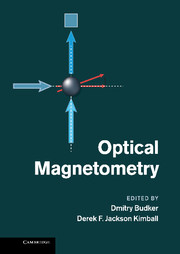Preface
Published online by Cambridge University Press: 05 May 2013
Summary
Optical magnetometry, in which a magnetic field is measured by observing changes in the properties of light interacting with matter immersed in the field, is not a new field. It has its origins in Michael Faraday's discovery in 1845 of the rotation of the plane of linearly polarized light as it propagated through a dense glass in the presence of a magnetic field. Faraday's historic discovery marked the first experimental evidence relating light and electromagnetism.
A century later, atomic magnetometers based on optical pumping were introduced and gradually perfected by such giants as Alfred Kastler, Hans Dehmelt, Jean Brossel, William Bell, Arnold Bloom, and Claude Cohen-Tannoudji, to name but a few of the pioneers. Recent years have seen a revolution in the field related to the development of tunable diode lasers, efficient antirelaxation wall coatings, techniques for elimination of spin-exchange relaxation, and, most recently, the advent of optical magnetometers based on color centers in diamond. Today, optical magnetometers are pushing the boundaries of sensitivity and spatial resolution, and, in contrast to their able competition from super-conducting quantum interference device (SQUID) magnetometers, they do not require cryogenic temperatures. Numerous novel applications of optical magnetometers have flourished, from detecting signals in microfluidic nuclear-magnetic resonance chips to measuring magnetic fields of the human brain to observing single nuclear spins in a solid matrix.
Information
- Type
- Chapter
- Information
- Optical Magnetometry , pp. xvi - xviiiPublisher: Cambridge University PressPrint publication year: 2013
